- Expert advice/
- Venues & vendors/
- Budgeting/
- Wedding Florist Cost: What Couples Actually Pay
- Budgeting
Wedding Florist Cost: What Couples Actually Pay
Wedding florist cost averages $5,100 to $7,600. Get realistic pricing for bouquets, centerpieces, and ceremony flowers to set your budget.
Last updated October 23, 2025
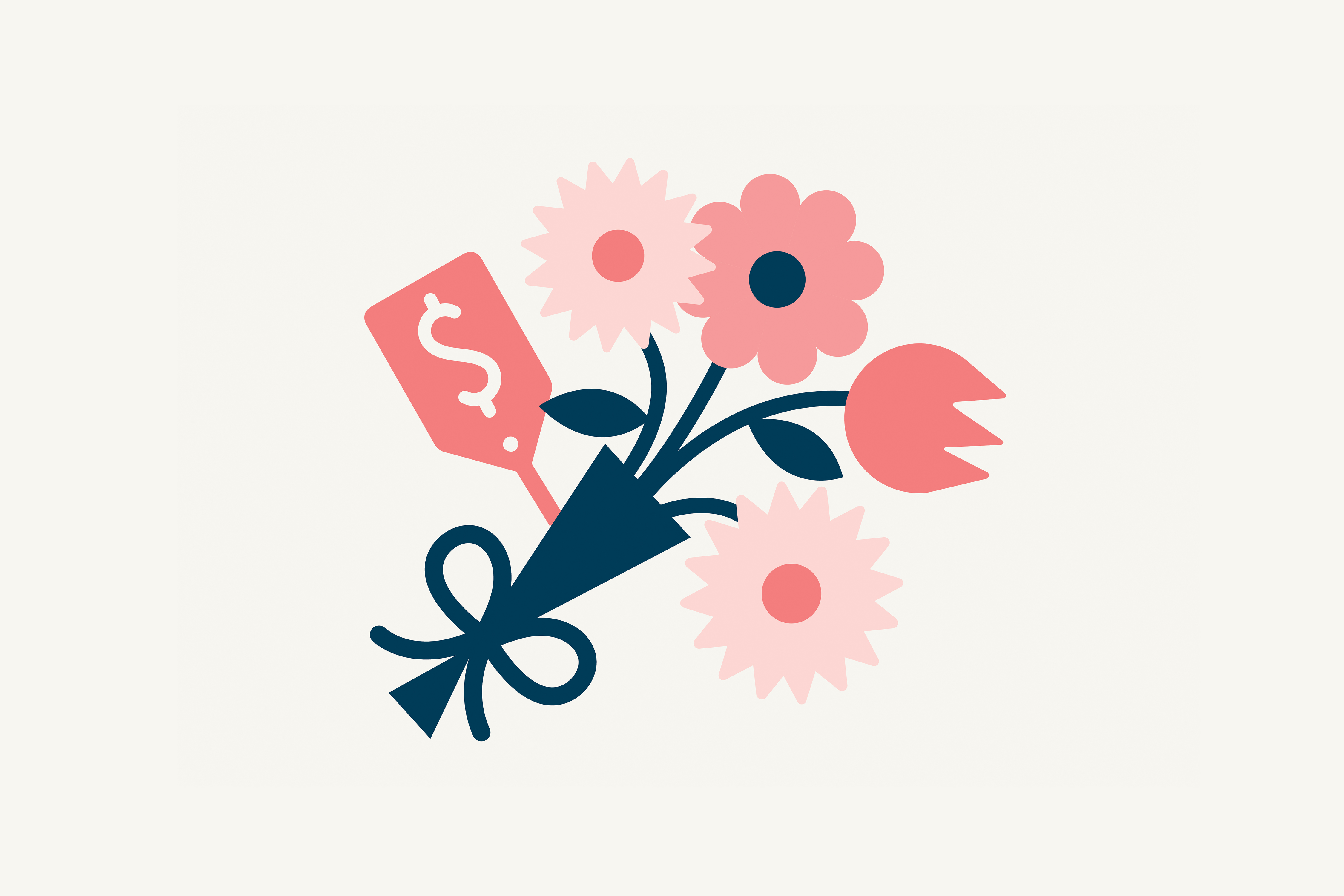
- Wedding flowers typically cost $5,100-$7,600 (about 13% of your total budget), covering everything from your bridal bouquet ($250-$350) to reception centerpieces ($100-$500 each), plus the florist's design work and setup.
- Your flower choices drive the biggest cost differences — seasonal, local blooms cost much less than rare or out-of-season flowers, while simple designs are more affordable than complex installations like floral arches or hanging arrangements.
- Smart strategies can help cut costs: Mix premium flowers with budget-friendly fillers, repurpose ceremony arrangements at your reception, focus spending on high-impact areas, and be upfront about your budget with your florist.
Wedding flowers can feel like one of the biggest question marks in your budget. You know you want beautiful blooms for your big day, but figuring out what everything actually costs can be overwhelming.
This guide breaks down the real numbers behind wedding flowers, from your bridal bouquet to reception centerpieces. You'll also learn what drives costs up or down and get practical tips to create the floral look you want without going over budget.
What do wedding flowers really cost?
Wedding flowers typically cost between $5,100 and $7,600, with a national average of $6,300, according to The Zola Wedding Cost Index (ZWCI). This usually accounts for about 13% of a couple's total wedding budget, so it's wise to set your wedding budget early on.
Their cost covers the entire creative process, from the initial design consultation where they help shape your vision to the arrangement of every bloom. They also manage the logistics of delivery, on-site setup of installations, and sometimes the breakdown after the party is over. Think of them as the artists and engineers who bring your floral dreams to life.
To understand your own potential costs, it helps to break down the pricing by the specific arrangements you'll need for your wedding day.
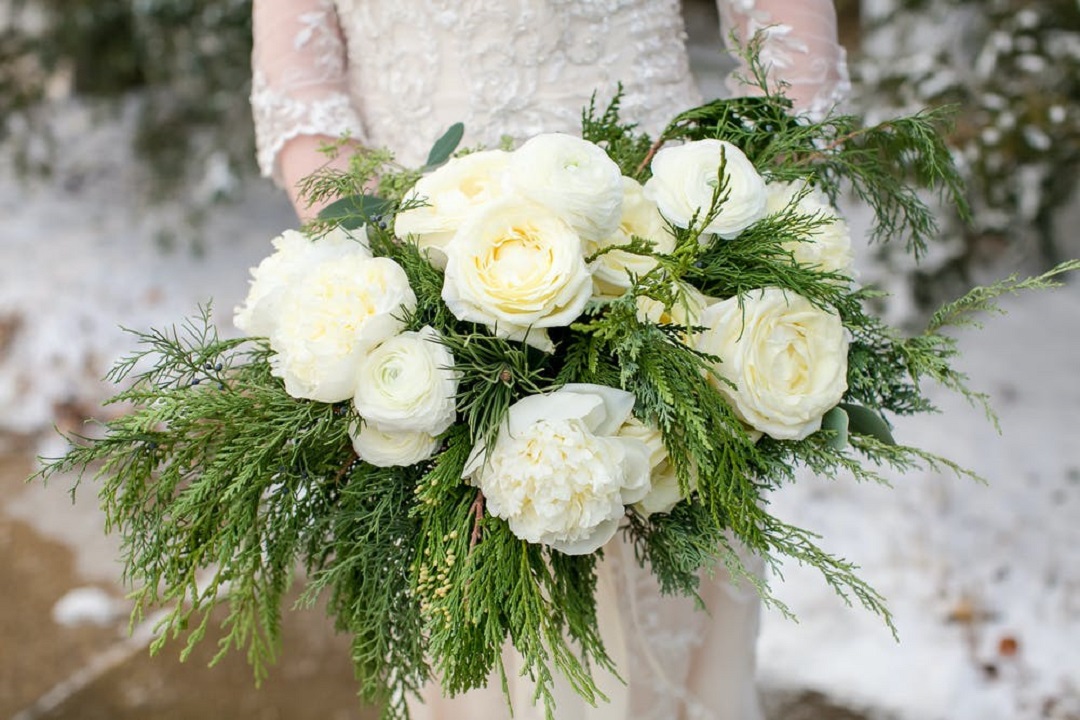
How much does each wedding flower arrangement cost?
Your total florist bill is a sum of all the individual floral pieces you choose for your wedding. The price for each arrangement depends on its size, the types of flowers used, and how complex the design is. Here’s a closer look at what you can expect for the most common wedding flower arrangements.
How much does a bridal bouquet cost?
Your bridal bouquet is often the most significant personal flower arrangement. Its price reflects that importance. A beautiful, standard-sized bouquet typically costs between $250 and $350. If you’re dreaming of a larger, cascading bouquet filled with premium flowers like peonies or garden roses, the cost can increase to $500 or more. The intricacy of the design, such as hand-wiring each stem, also adds to the labor and final price.
Wedding party flowers
The flowers for your wedding party are designed to complement your look and the overall theme. Bridesmaids' bouquets are usually smaller and simpler than the bridal bouquet, costing between $80 and $150 each. For the other members of your party, you can expect to budget for the following:
- Boutonnieres: These small lapel arrangements for groomsmen, fathers, and grandfathers typically cost $20 to $40 each.
- Corsages: Worn by mothers and grandmothers, these can be pinned on or worn on the wrist and usually range from $30 to $50.
- Flower crowns or petals: For a flower girl, a delicate flower crown might cost between $50 and $100, while a basket of petals is a more budget-friendly option at around $30.
Ceremony arrangements
Ceremony flowers set the scene for your vows and create a beautiful focal point. Large arrangements for the altar or a floral arch are often the most dramatic pieces, with costs ranging from $500 for simpler designs to over $2,000 for lush, elaborate installations.
Flowers to decorate the aisle, such as small arrangements tied to chairs or clusters of petals, can add another $20 to $50 per row. Many couples choose to have two to four large, impactful ceremony pieces that can be moved and repurposed at the reception.
“We used the arrangements from the altar at our ceremony for our sweetheart table. It was a huge money saver.”, Francine, Zola Couple.
Reception flowers
Your reception flowers are where a large portion of your floral budget will go, as they decorate the space where you and your guests will spend the most time. Centerpieces are the main component, and their cost varies widely based on the following sizes and styles:
- Low centerpieces: Simple, low-profile arrangements for guest tables typically cost between $100 and $250 each.
- Tall centerpieces: Elevated, dramatic arrangements can range from $250 to $500 or more per table, as they require more flowers and structural support.
For a wedding with 15 tables, your centerpiece cost could easily be between $1,500 and $4,000. Other reception flowers to consider include arrangements for the sweetheart or head table ($150-$600), flowers for the cake ($50-$150), and decor for the bar or welcome table ($100-$300).
While these are typical price ranges, several key factors can cause your final costs to go up or down.
What affects your wedding flower budget?
You might wonder why two weddings with similar floral arrangements can have vastly different price tags. The final cost of your wedding flowers is influenced by a handful of key factors that are important to understand as you plan.
- Flower selection: The specific types of flowers you choose have the biggest impact on cost. In-demand, delicate, or rare blooms like peonies, gardenias, and orchids are at a premium price point. More common flowers like carnations, daisies, and baby's breath are much more affordable.
- Seasonality and availability: Flowers that are naturally in season and grown locally will always be less expensive than those that have to be imported from across the world. Choosing tulips in the spring or dahlias in the fall will give you more for your money than requesting those same flowers when they are out of season.
- Design complexity: The more labor-intensive your arrangements are, the higher the cost. A simple bouquet of hand-tied roses is less expensive than a cascading bouquet where each flower must be individually wired. Large-scale installations like hanging floral chandeliers or flower walls require significant time and expertise to construct on-site.
- Your guest count: This is a simple numbers game. A larger guest list means more tables, which means more centerpieces. If you have 20 guest tables instead of 10, your centerpiece budget will essentially double.
- Your location: Just like with other services, florists in major metropolitan areas often have higher overhead and labor costs, which are reflected in their pricing. For example, NYC's average wedding floral cost is $8,000 whereas Milwaukee, Wisconsin is $5,500.
- Additional services: Don't forget to account for fees beyond the flowers themselves. Most florists charge for delivery, on-site setup, and breakdown or cleanup after the event. These fees can add several hundred dollars to your final invoice.
The good news is that even with all these variables, there are plenty of ways to cut costs on wedding flowers and still get a beautiful floral look that fits within your budget.
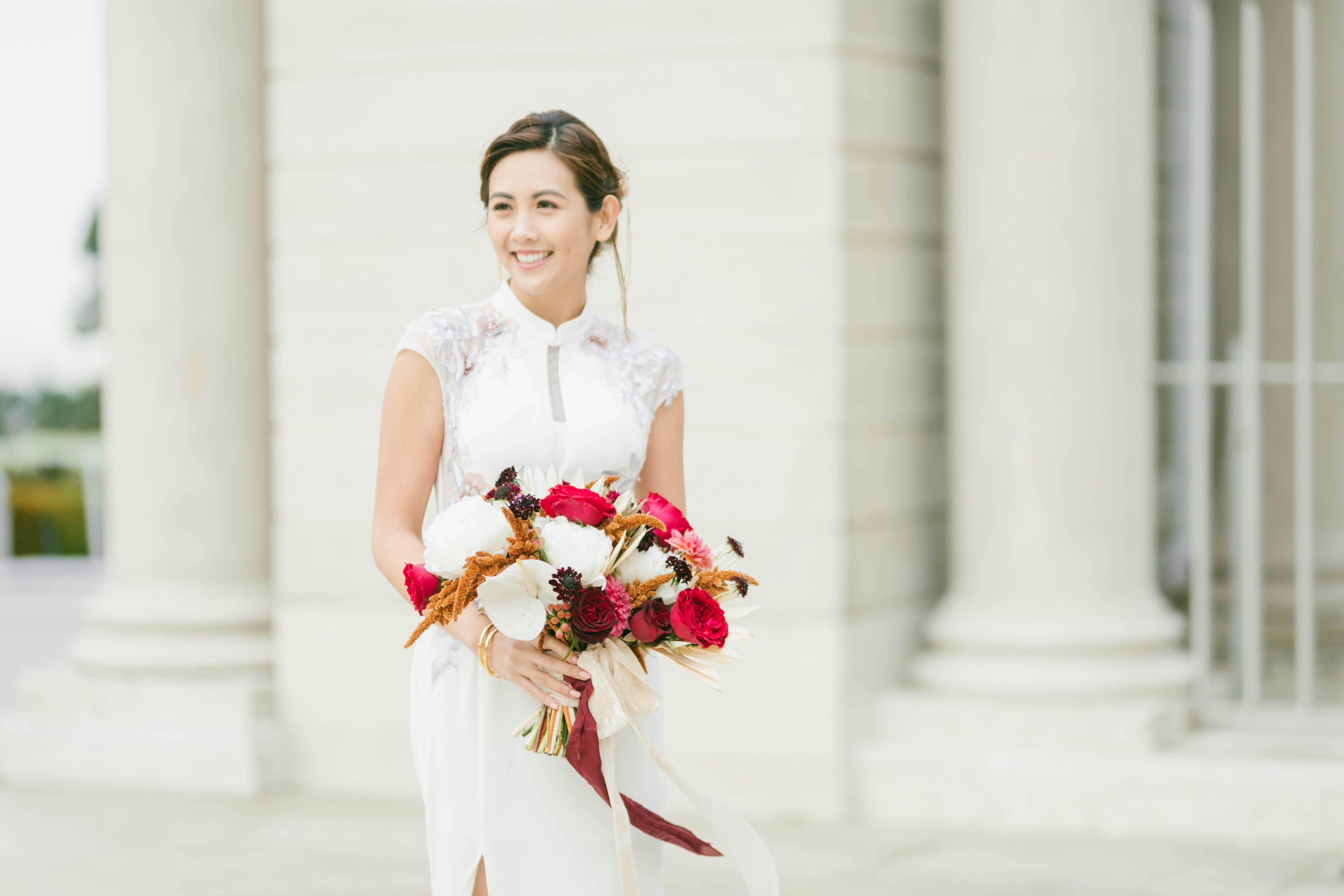
How to get the flowers you want within budget
You can absolutely have stunning flowers at your wedding without blowing your budget. It’s all about planning smart and making strategic choices with your florist. Here are a few of the best ways to get the look you love for less.
-
Choose seasonal and local flowers
This is the number one rule for saving money on flowers. Blooms that are in season and grown nearby don't have to be shipped from far away, which cuts down on costs significantly. A good florist can tell you what will be beautiful and available at the time of your wedding, whether it's peonies in June, dahlias in September, or ranunculus in April.
-
Mix high-end and budget-friendly blooms
You can create a lush, expensive-looking arrangement without using only premium flowers. The key is to use a few "focal" flowers—those show-stopping, pricier blooms—and fill out the rest of the arrangement with more affordable options. Greenery like eucalyptus or ferns, along with filler flowers like baby's breath, waxflower, or carnations, can add volume and texture for a fraction of the cost.
-
Repurpose your arrangements
Get more bang for your buck by using your flowers in more than one location. The beautiful arrangements that lined your ceremony aisle can be moved to decorate the bar or dessert table at your reception. The statement piece from your altar can become a stunning backdrop for your sweetheart table. Just be sure to coordinate the logistics with your florist or wedding coordinator ahead of time.
-
Focus on high-impact areas
Instead of trying to put a little bit of floral decor everywhere, concentrate your budget on the areas that will get the most attention and be photographed the most. A breathtaking ceremony arch, a lush head table, and a welcoming arrangement at the entrance will make a bigger impression than small, scattered arrangements that go unnoticed.
-
Consider beautiful alternatives to flowers
Flowers don't have to be the only decorative element. You can create a romantic and elegant atmosphere by incorporating other items. Groupings of candles can provide a warm glow, while garlands of greenery can run down the length of tables for a natural look. Lanterns, beautiful linens, or even bowls of fruit can also serve as unique and cost-effective centerpieces.
-
Be open and honest with your florist
Your florist is an expert and your creative partner. If you are upfront about your budget from the very first conversation, they can provide realistic suggestions and find clever solutions to give you the style you want. They know which flowers give the best look for the price and can guide you toward choices that will make your budget work harder.
Start planning your dream wedding flowers
Figuring out your wedding flower cost is a key part of your overall budget. While the numbers can seem big at first, remember that you have control over the final price. By understanding what drives costs and working closely with a great florist, you can create a beautiful day that perfectly reflects your style and fits your budget.
Ready to find the professional who can bring your vision to life? Explore top-rated florists near you and find the perfect match for your wedding day.
Wedding flower cost FAQs
Is $1,000 enough for wedding flowers?
A $1,000 budget can be realistic for a smaller wedding or if you are only ordering personal flowers, like bouquets and boutonnieres, without large ceremony or reception arrangements.
What is a normal budget for wedding flowers?
According to The Zola Wedding Cost Index, or ZWCI, most couples allocate about 13% of their total wedding budget to flowers & is typically within the range of $5,100-$7,600.
How much should I tip my wedding florist?
A tip is not always expected, but it's a thoughtful gesture if you loved their work. You can tip $50-$100for the lead florist, and a smaller amount like $5-$10 per person for the delivery and setup team.
Up next for you
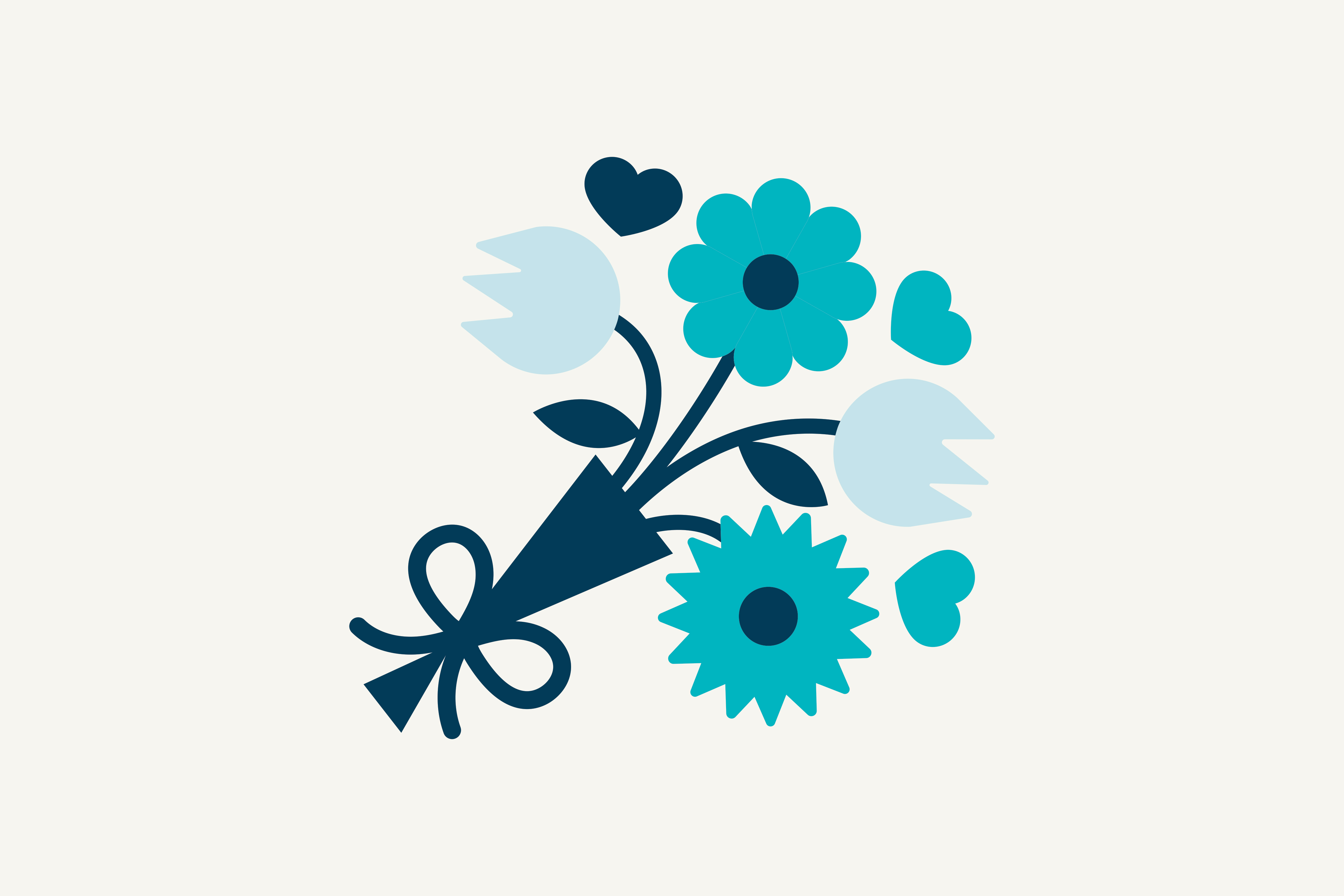
How to Make a DIY Wedding Bouquet
How-To
Creating a DIY wedding bouquet is a fun way to add a unique touch to your wedding. Our step-by-step guide will help you create the bouquet of your dreams.

Wedding Cake Cost Guide: Average Price and Budget Tips
Advice
Wedding Cake Costs: Discover the national average of $917, typical range of $700 to $1,100, and smart ways to save on your wedding dessert.
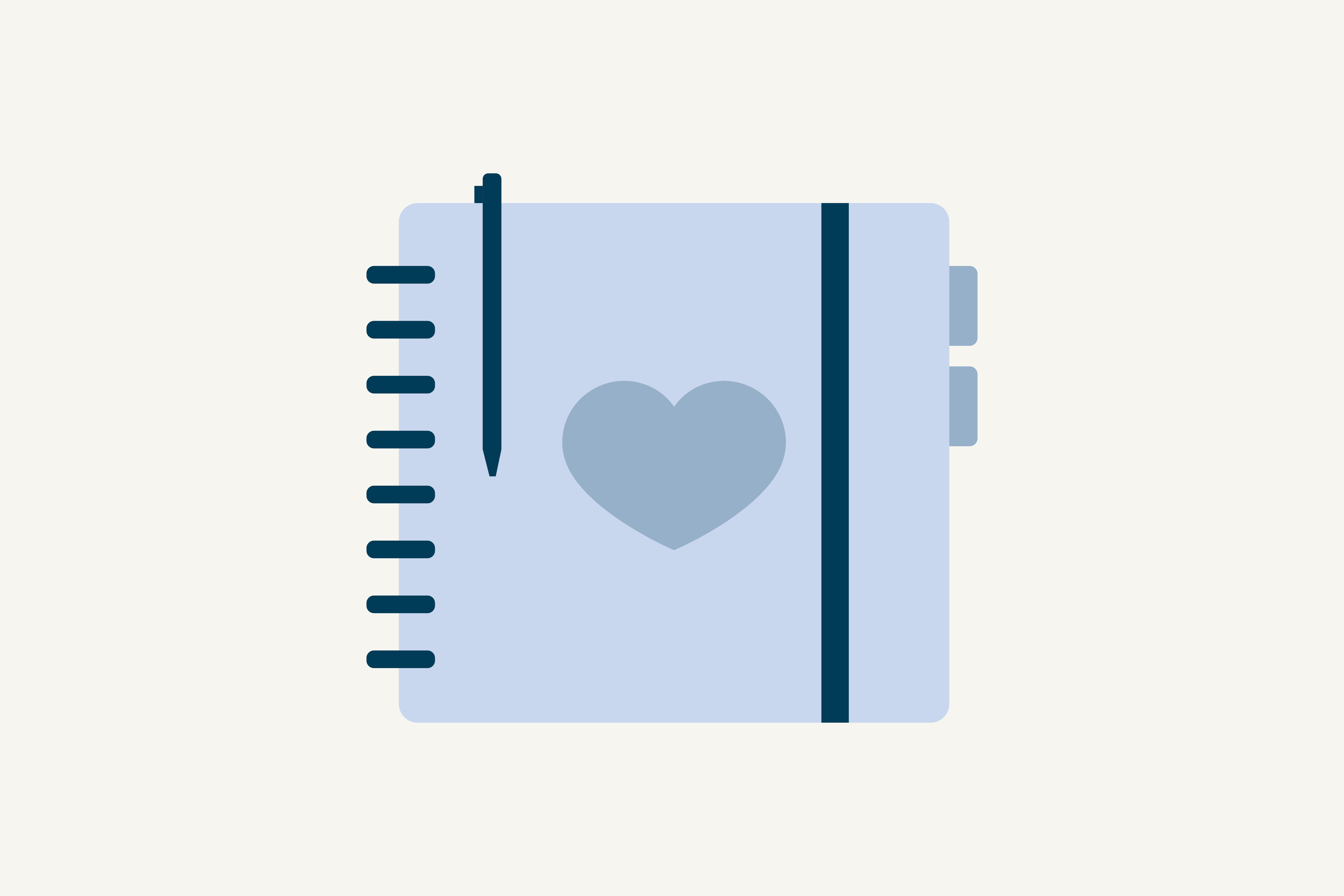
How to Plan a Wedding: A Step-by-Step Guide
How-To
We’ll walk you through the steps of online wedding planning, highlighting all of Zola’s incredibly easy and intuitive online wedding planning tools that’ll make planning for the big day more fun and less frustrating.
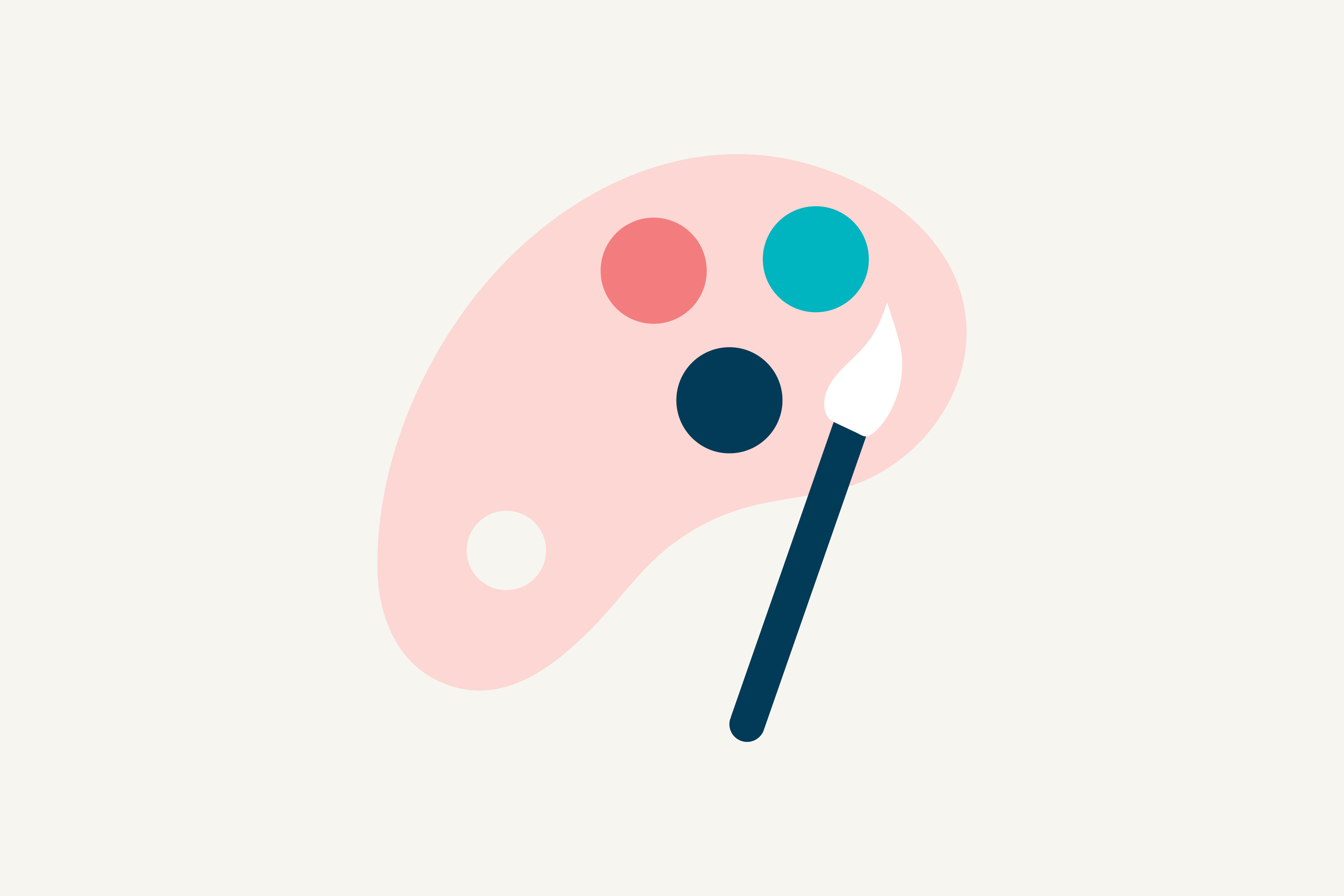
How to Choose Your Wedding Colors (+ Color Palette Ideas)
How-To
Nervous about choosing your wedding colors? Don’t be: we’ve outlined some basic steps you can take to choose a wedding color palette that matches your vision and expresses your personality as a couple.
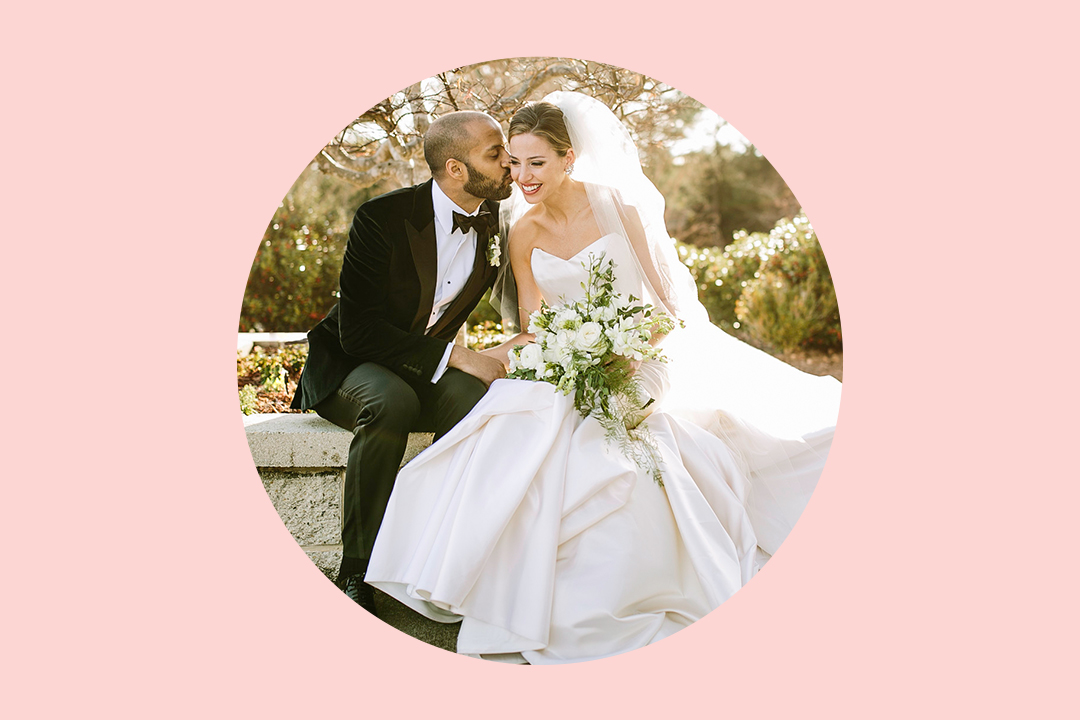
What's Your Wedding Style? + 130 Decor Ideas
Inspiration
In this wedding style guide, find out why thinking about your wedding style early on will help you in your planning, and how to use Zola Inspiration to discover your own personal wedding vision.
Featured
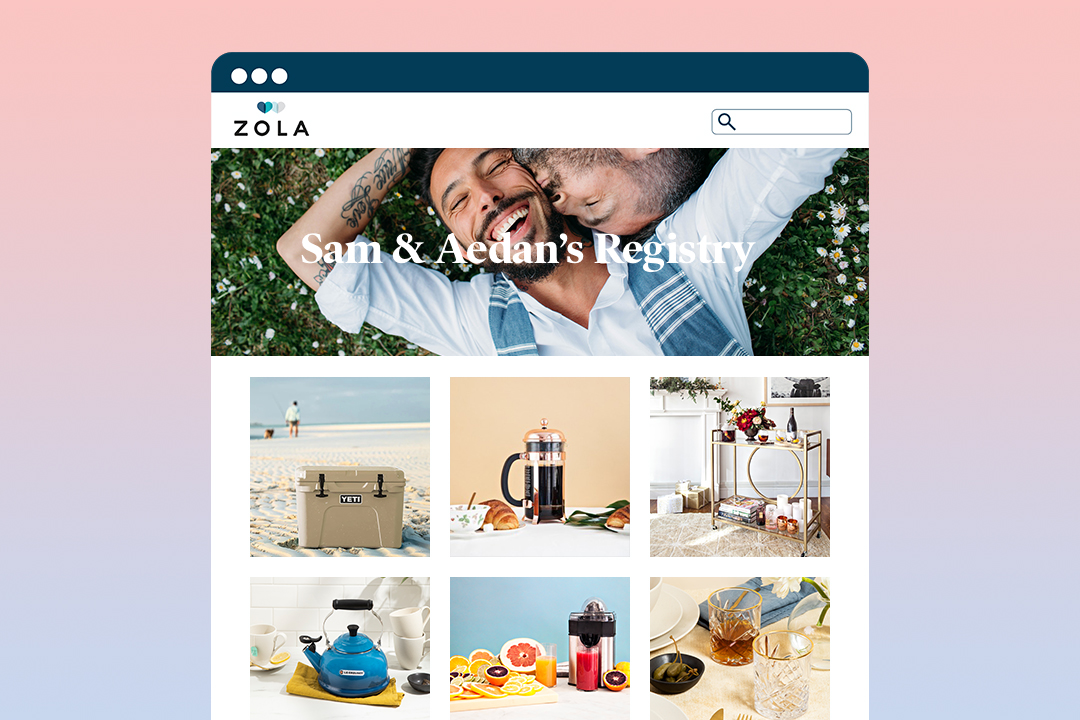
What Is a Registry (And Why Do You Need One)?
Inspiration
A wedding registry is a personalized collection of gifts that an engaged couple has specifically chosen for their guests to shop from in order to make the wedding gifting experience simpler, easier, and more satisfying for everyone.

Wedding Invitation Wording: A Complete How-To Guide
How-To
Learn the how-to's of wedding invitation wording, plus formal and casual wedding invitation examples from the experts.

A Guide to Bridal Showers
Inspiration
This bridal shower guide will introduce you to the basics of bridal showers: traditional bridal shower etiquette (and which of those “rules” you can break), whom to invite, what to do, and who pays for it all.

How to Plan a Wedding: A Step-by-Step Guide
How-To
We’ll walk you through the steps of online wedding planning, highlighting all of Zola’s incredibly easy and intuitive online wedding planning tools that’ll make planning for the big day more fun and less frustrating.

Wedding Guest Attire: A Guide to Every Dress Code
How-To
Dress to impress! Your go-to guide for wedding guest attire, from formal to casual. Find the perfect look for every dress code and celebration.
- Expert advice/
- Venues & vendors/
- Budgeting/
- Wedding Florist Cost: What Couples Actually Pay
Find even more wedding ideas, inspo, tips, and tricks
We’ve got wedding planning advice on everything from save the dates to wedding cakes.
